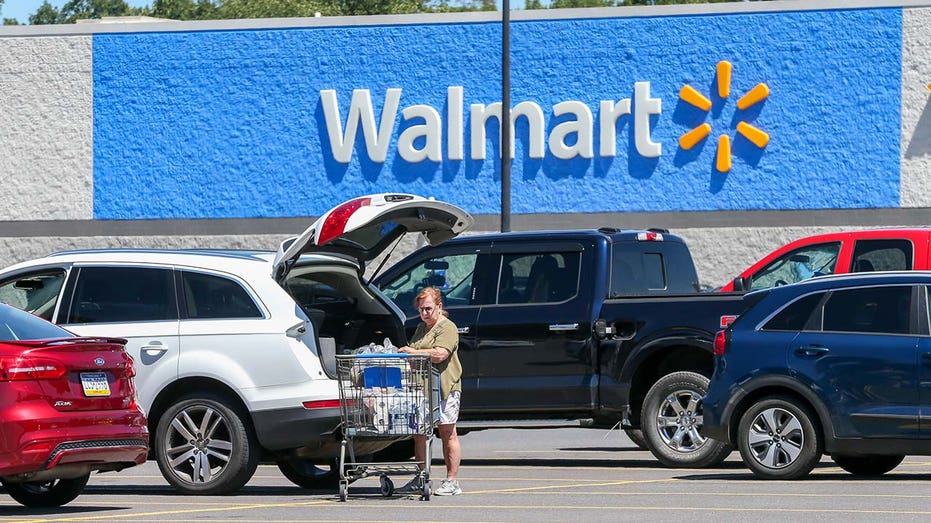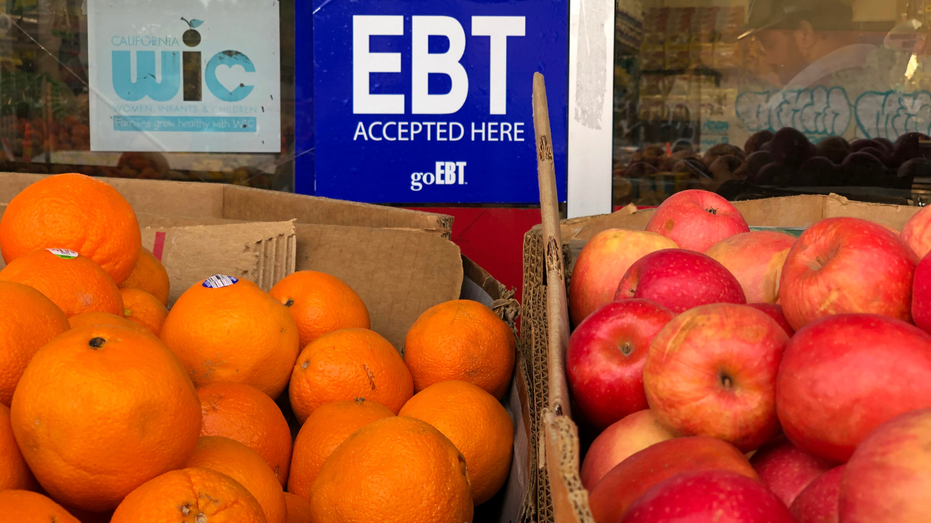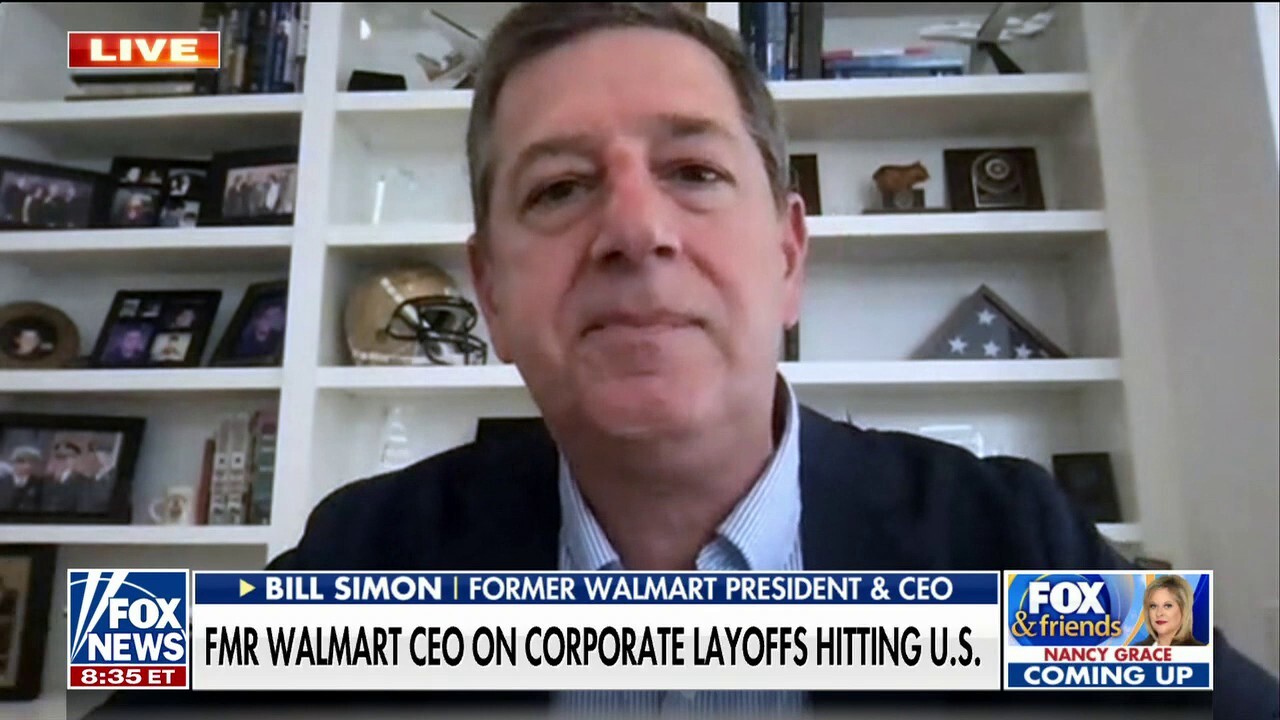Food Stamps are about to spoil grocery stores’ outlook
The end of enhanced food-stamp benefits could hurt sales at chains like Walmart
Former Walmart CEO sounds off on US economy: ‘We have to get this inflation under control’
Former Walmart U.S. CEO Bill Simon joined ‘Fox & Friends Weekend’ to discuss the nationwide spike in layoffs that have now extended beyond the Big Tech industry.
Enriched pandemic-era food stamps made a big mark on supermarket sales in the past three years. Those extra benefits are soon coming to an end, possibly spoiling supermarkets’ outlook for the year.
The federal government started beefing up households’ food budgets starting March 2020 to address food insecurity during the Covid-19 pandemic. Over the last three calendar years, that added up to about $98 billion of extra assistance—known as emergency allotments—on top of regular food stamps issued through the Supplemental Nutrition Assistance Program, or SNAP, according to HSA Consulting, a retail industry research firm. Those boosts made food stamps an important component of food sales. In 2022, SNAP benefits (including the emergency allotments) made up 12.3% of total at-home U.S. food and beverage retail sales, up from 7.1% in 2019, according to HSA Consulting.
Congress in late December put an end to that food-stamp boost, which will mean that SNAP-eligible households in 35 U.S. states and jurisdictions will lose at least $95 a month in benefits starting in March, according to the Center on Budget and Policy Priorities, a nonpartisan research and policy institute. Some states opted to stop receiving those allotments between last year and early this year.

COAL TOWNSHIP, PENNSYLVANIA, UNITED STATES - 2022/08/12: A woman loads groceries into her car at a Walmart Supercenter. (Photo by Paul Weaver/SOPA Images/LightRocket via Getty Images)
New Jersey passed legislation in early February to make up for at least part of that SNAP cut through state funding, but the state is an exception, not the rule. In total, the CBPP expects households’ monthly SNAP benefits to decline by about $3 billion a month starting in March. An average three-person household receiving SNAP will see their monthly benefit go from $759 a month to $592 a month, for example, according to estimates from CBPP.
NEW COSTCO MEMBERS CAN SCORE A DISCOUNT
Food stamps account for more than 10% of overall dollar-store revenues and can account for more than 20% of supermarket sales in lower-income areas, according to Howard Jackson, president of HSA Consulting. Ending those extra payments could have a noticeable impact on the stores’ sales. In an August report, BMO Capital Markets estimated that supermarkets in eight states that ended SNAP emergency allotments underperformed those in the 38 states that were still on them in the fiscal second quarter ended August 2022.

A sign noting the acceptance of electronic benefit transfer (EBT) cards that are used by state welfare departments to issue benefits is displayed at a grocery store on December 04, 2019 in Oakland, California. (Photo by Justin Sullivan/Getty Images) / Getty Images)
One offset to the emergency allotment cliff is the cost of living adjustment on the regular SNAP benefit, which raised the size of the food stamps by 12.5% starting in October. But another cost of living adjustment—an 8.7% increase in social security benefits—means some households will either see a step-down in SNAP benefits or stop qualifying for the food-stamp program this year. Net-net, Goldman Sachs expects overall SNAP benefits to decline 7% this year compared with the last—a reversal after at least three consecutive years of growth. Many households will also get smaller tax refunds this tax season compared with last year: After receiving pandemic-era boosts, child tax credits, the earned-income tax credit and the child and dependent care credit returned to 2019 levels for 2022.
WALMART CLOSING THREE TECH HUBS, ASKING EMPLOYEES TO RELOCATE

FILE - The Family Dollar logo is centered above one of its variety stores in Canton, Miss., Thursday, Nov. 12, 2020. More than 1,000 rodents were found inside a Family Dollar distribution facility in Arkansas, the U.S. Food and Drug Administration an (AP Photo/Rogelio V. Solis, File / AP Newsroom)
Of the companies that Goldman Sachs crunched numbers on, bargain retailer Grocery Outlet had the highest exposure to SNAP dollars, with food stamps accounting for roughly 15% of total sales in 2021. Others with high exposure include Walmart, Dollar General, Family Dollar, Kroger and BJ’s Wholesale Club, all of which saw almost 10% of revenue come from food stamps.
| Ticker | Security | Last | Change | Change % |
|---|---|---|---|---|
| GO | GROCERY OUTLET HOLDING CORP. | 21.00 | -0.25 | -1.18% |
| WMT | WALMART INC. | 92.50 | +0.62 | +0.67% |
| DG | DOLLAR GENERAL CORP. | 77.27 | +1.01 | +1.32% |
| FDO | NO DATA AVAILABLE | - | - | - |
| KR | THE KROGER CO. | 61.08 | +0.58 | +0.96% |
| BJ | BJS WHSL CLUB HLDGS INC | 96.30 | -0.47 | -0.49% |
That doesn’t necessarily portend doom and gloom for discount supermarkets and dollar stores, some of which have started seeing more business from inflation-crunched, higher-income consumers who might have previously shopped at upscale grocers such as Whole Foods. Meanwhile, low-income consumers still look fairly healthy: Unemployment rates remain at a record low for those with educational attainment of less than a high school diploma at least as far back as the U.S. Bureau of Labor Statistics data goes (1992). Meanwhile, wage growth has been especially strong for low-income workers.
CLICK HERE TO GET THE FOX BUSINESS APP
Still, the fading food-stamp benefit—paired with smaller tax refunds—could suddenly sensitize a large block of consumers to higher egg and cereal prices. Supermarkets’ food fight for market share could intensify this year.
